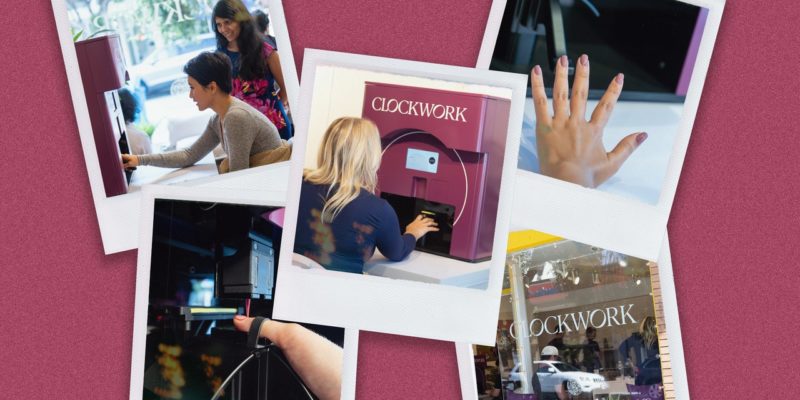
After months without the din of strangers, many have savored stepping into the sound bath of a nail salon: the light breeze of the drying fans, the satisfying shock of a nail clipper, the familiar instructions to “choose your color,” the chatter, in English and not. But this summer, in one storefront in San Francisco, the noises of a bustling salon were replaced by what one San Francisco reporter described as the “whirring of an Inkjet printer.”
The machine behind the whirring is Clockwork, a nail-painting robot only slightly bigger than a dorm-room mini-fridge, and it began accepting manicure appointments in June. Clients strap in, finger by finger, and the robot’s mechanical brush fills in concentric circles of polish. In about 10 minutes, all 10 of your nails are painted. And it’s not the only manicure robot in the works: Companies like Nimble (an at-home robot) and Coral (still a prototype) are also aiming to get a piece of the market.
“Our goal is to be an express option for nail treatments,” Clockwork’s founder, Renuka Apte, tells me. “We started working on this company towards the end of 2018, pre-COVID, because we really believed people wanted an ‘in-and-out’ option.” Apte sees Clockwork as “an amenity” that could one day be available in places like corporate buildings, retail stores, and airports. The speedy, no-frills service is no doubt appealing to those short on time and money (each manicure costs just $8). According to the company, appointments were booked through July.
Still, don’t expect to see these machines replacing the traditional nail salon any time soon. Clockwork’s robot doesn’t paint, cut, buff, file, or apply a topcoat. And, according to Apte, they have no plans of offering elaborate services like deep cleaning, acrylics, massages. “Think of us as a fast-casual restaurant and a nail salon like a sit-down restaurant,” says Apte. “They each have their own place in people’s lives.”
Although she wasn’t thrilled about the timing of Clockwork’s launch, Dung Nguyen, program and outreach manager at the California Healthy Nail Salon Collaborative, agrees there’s room for robots: “We don’t anticipate a robot taking over the industry and taking over worker’s jobs,” she says.
And that’s good news for nail-salon workers who had faced a particularly fraught year long before Clockwork was plugged into an outlet in San Francisco. Last year, governor Gavin Newsom was criticized by nail workers after he alleged that California’s first community spread of COVID-19 occurred in a nail salon. He later apologized, but as Nguyen tells me, “the damage [to the industry’s reputation] was already done.”





